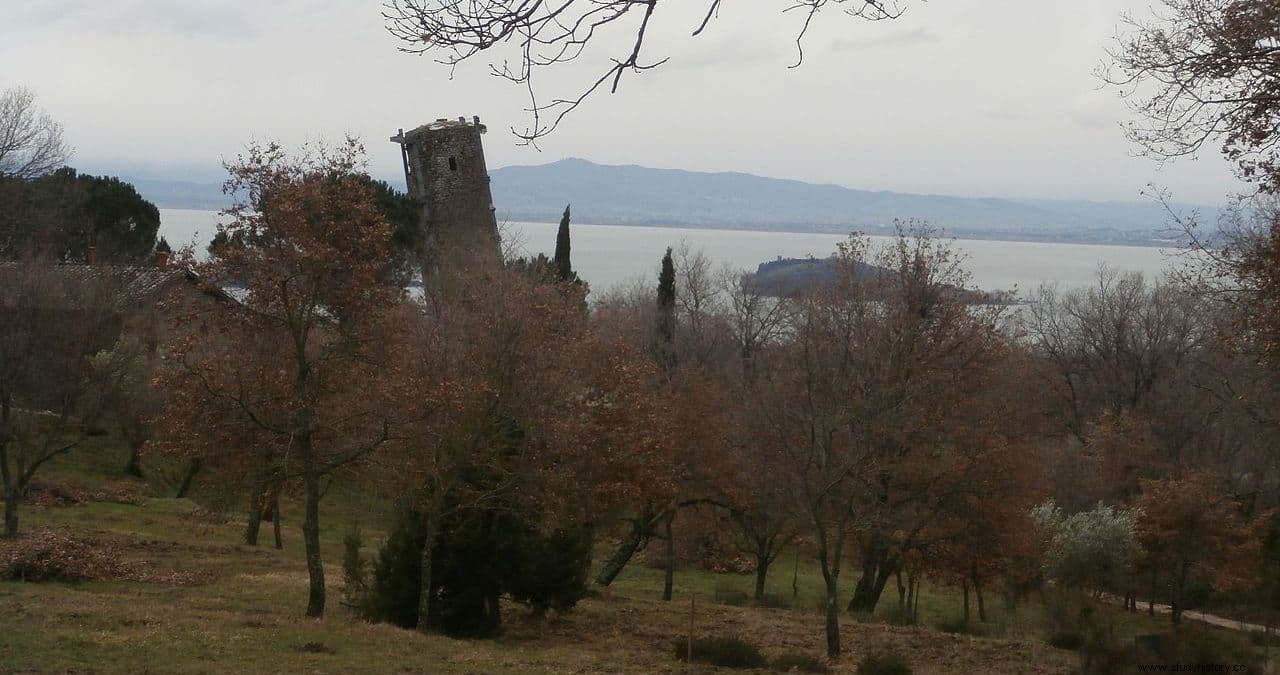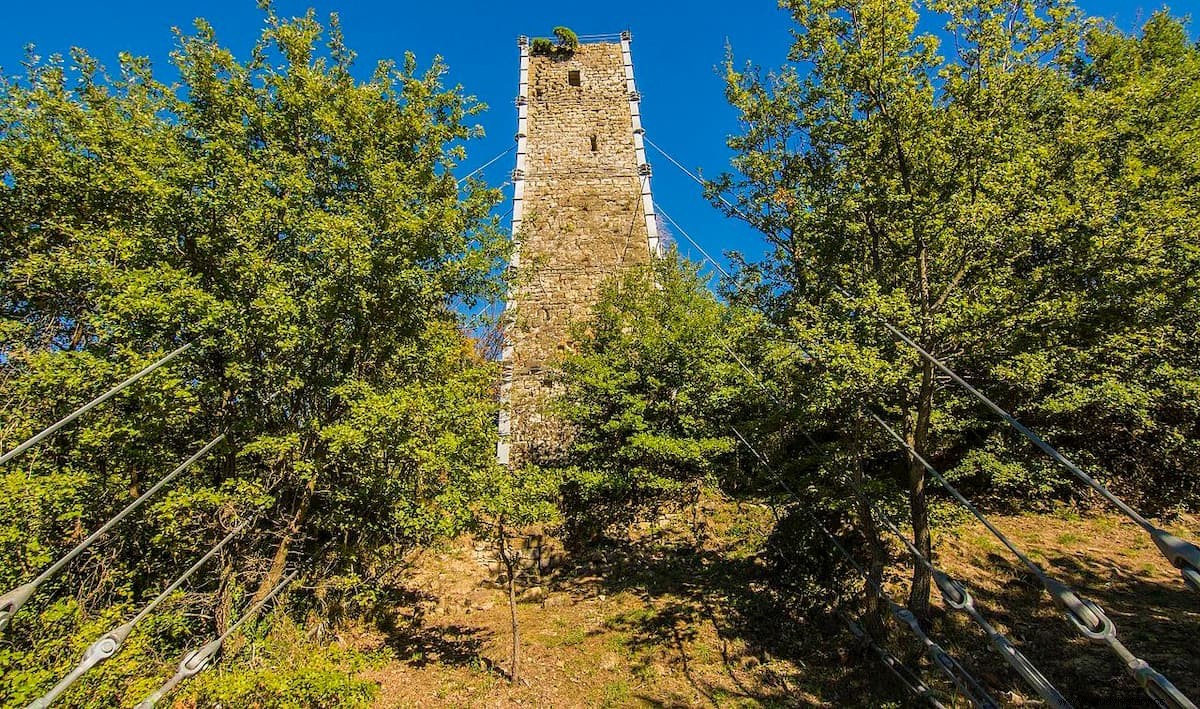To the north of Lake Trasimeno between the towns of Perugia and Cortona, and very close to the place where Hannibal defeated the army of the Roman consul Gaius Flaminius on June 21, 217 BC, there is a small town called Vernazzano, which barely has 300 inhabitants. .
It is located on the hills that dominate the old battlefield and its main cultural and tourist attractions are a stream that is curiously called Río , and the tower of a medieval castle, so inclined that it is only supported by a system of steel cables.
The castle, or rather what remains of it, is on top of a rocky spur at an altitude of about 430 meters. It was built in the 11th century to defend the nearby monastery of Santa Rita di Petroia, and was donated by the abbot in 1202 to the commune of Perugia.

The Michelotti family occupied it in 1383 and, although the Perugians tried to recover it by force, in the end they had to negotiate a ransom price, as its walls turned out to be impregnable.
As soon as they regained control, they restructured and improved the defenses, among which is the famous watchtower now known as Torre Torta.

The surroundings of the castle were practically depopulated after the earthquake of 1750, which caused landslides seriously damaging the church and the houses, and left the tower hanging on the edge of the precipice with a threatening slope of collapse that, however, managed to survive.
Already in the 20th century, the tower was secured with a metal structure and a system of steel tension cables anchored to the ground, which allows the tower to continue standing even when its inclination of about 13 degrees is much greater than, for example, the tower of Pisa.

Of the castle, apart from the tower, a few sections of masonry and the church of Santa Maria delle Trosce remain standing. It is known that the base of the tower had a plinth with steps about 6 centimeters wide by 26 high, which was still visible in 1846. At that time the inclination was still about 6 or 7 degrees.
Sometime between 1846 and the landslides that recurred in the 1960s, the plinth sank into the ground and was hidden, and the tower reached its current 13-degree tilt.
